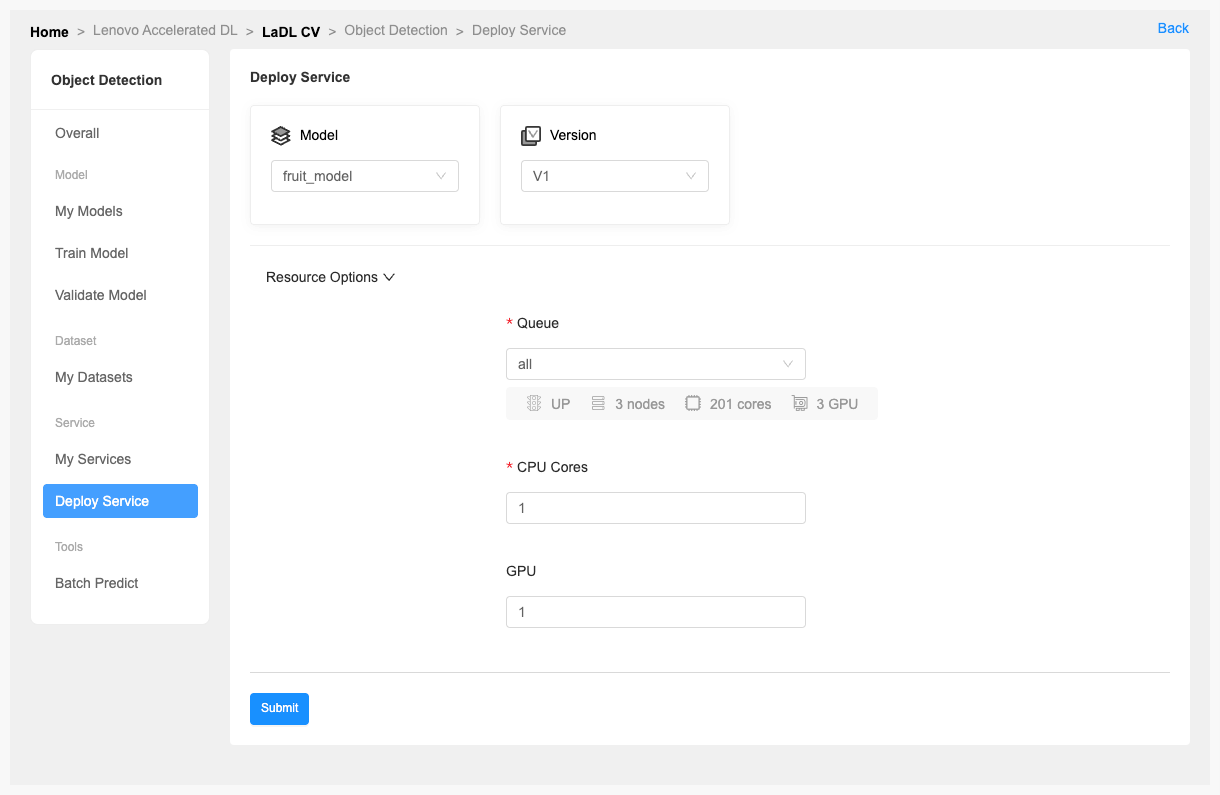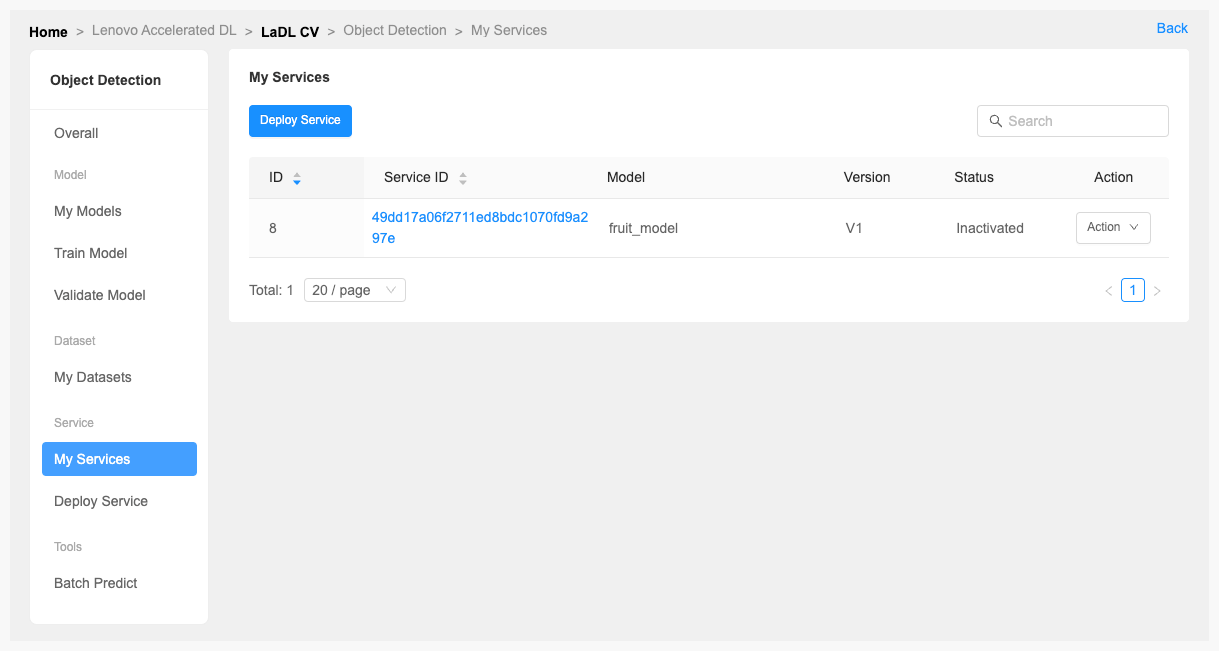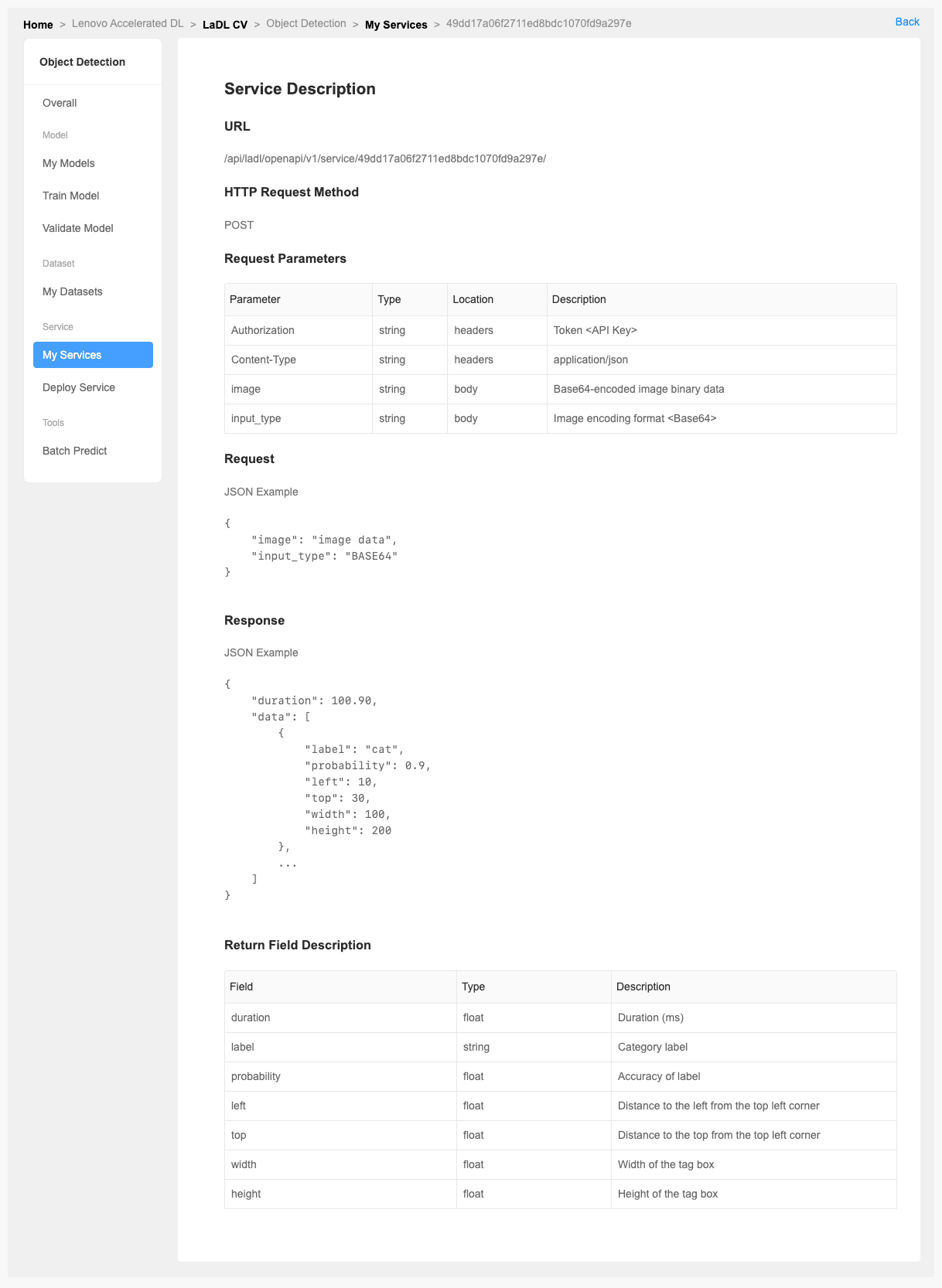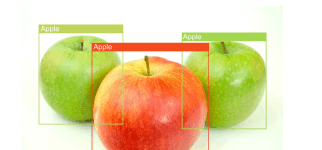
Fruit Detection
By training the AI model of object detection, the intelligent recognition of
'fruit detection' is realized. It is widely used in offline large and medium-sized supermarkets
to improve the efficiency of cashier.
Background
- We often encounter fruits we don't know in our lives. We can identify the names of fruits in the pictures according to the photos taken, so as to improve users' awareness of life information.
Prepare Dataset
- First step: Specify the categories to be identified. In this example, take "fruit" as an example, such as bananas, pineapples, and snakeskins.
- Second step: To prepare pictures of these fruits. It is recommended to have at least 200 pictures, including the front and side of the fruit. For example:
- Third step: Create a dataset through LiCO.

PS: Click here to download a sample dataset.
If you need a complete dataset, please send mail to hpchelp@lenovo.com
Click [Create Dataset].
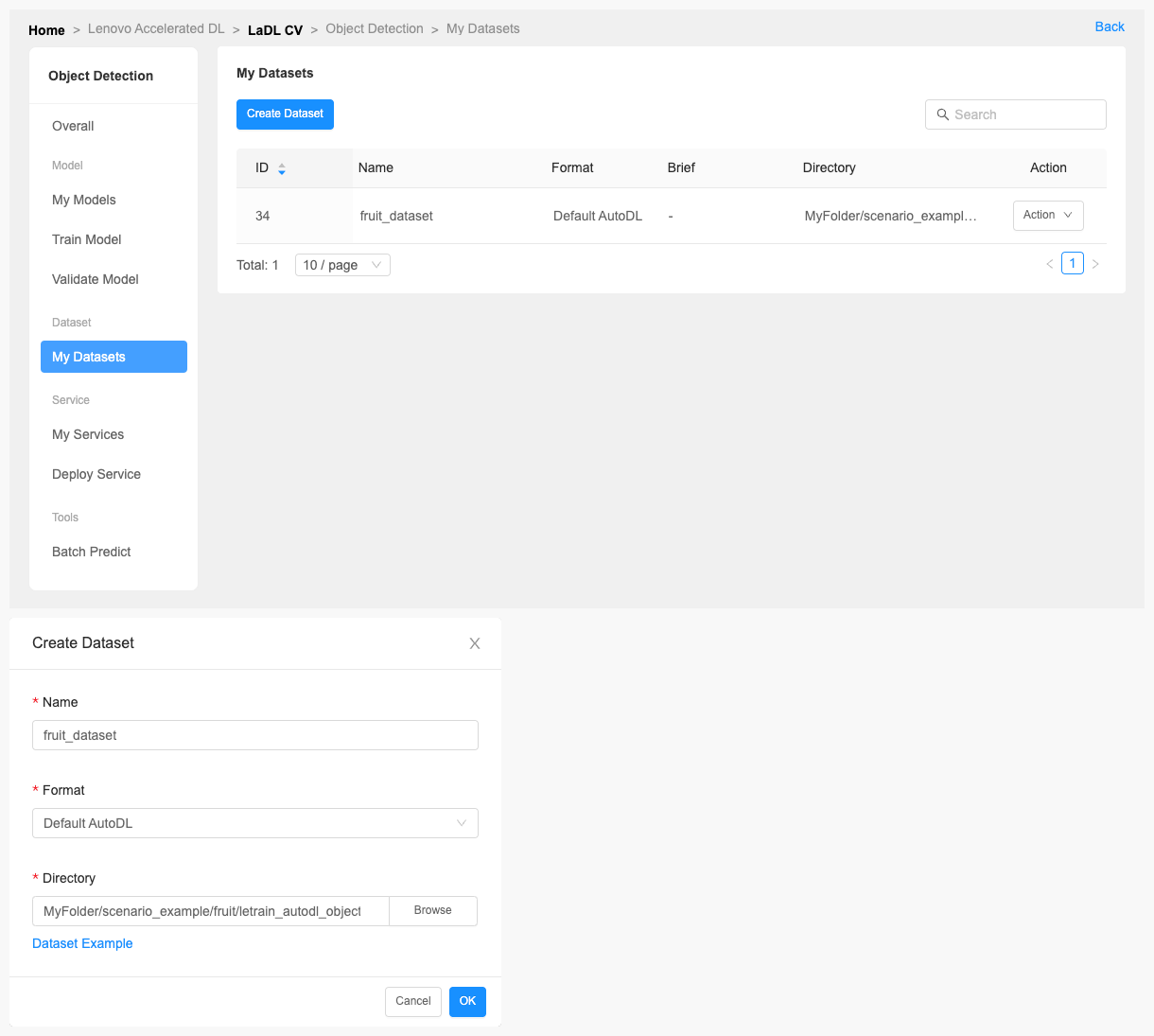
Train Model
- When your dataset preparation is complete, you can click [Create Model] to complete the model creation.
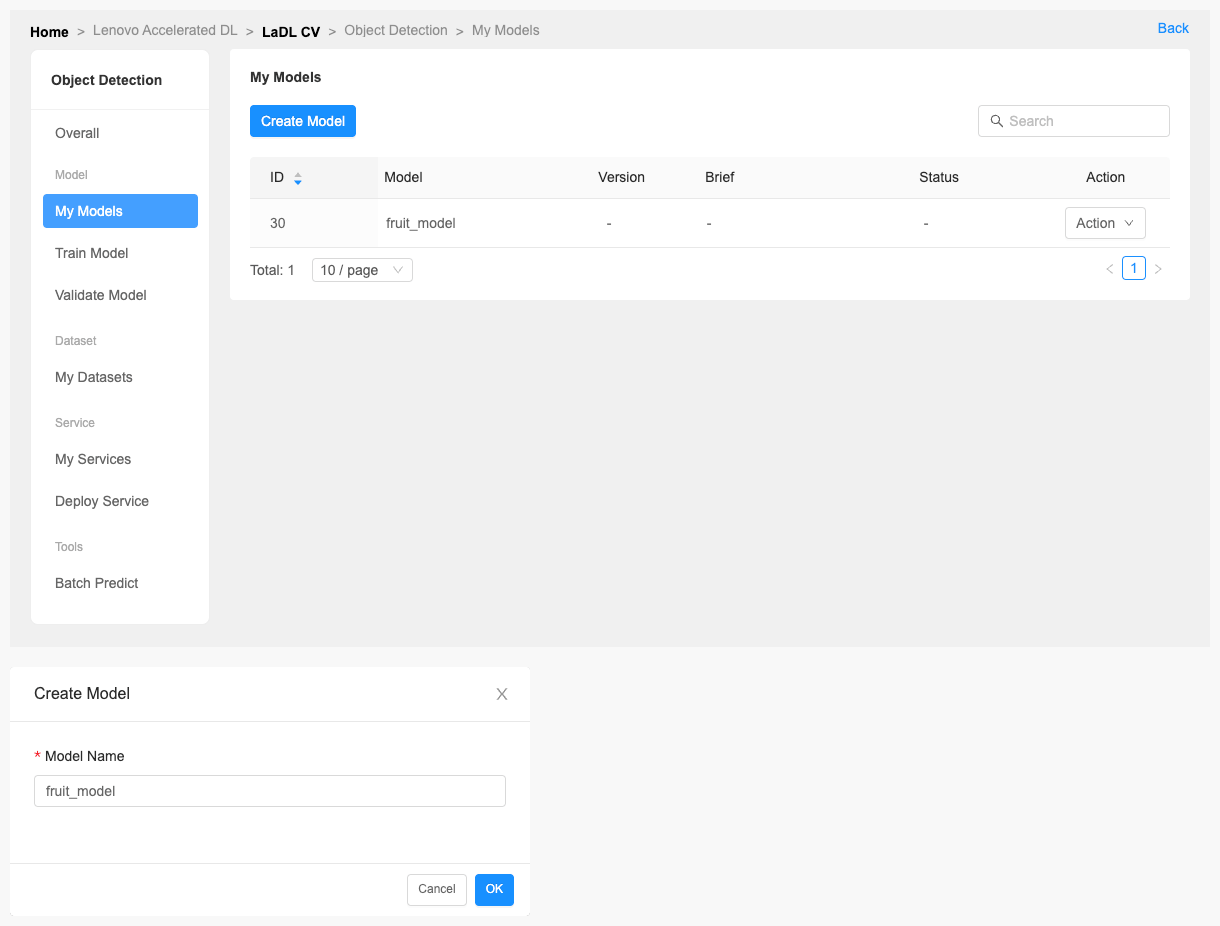
- And then click [Train Model] to start training.

Validate Model
- After the model training is completed, the accuracy of the model can be verified online through [Validate Model].
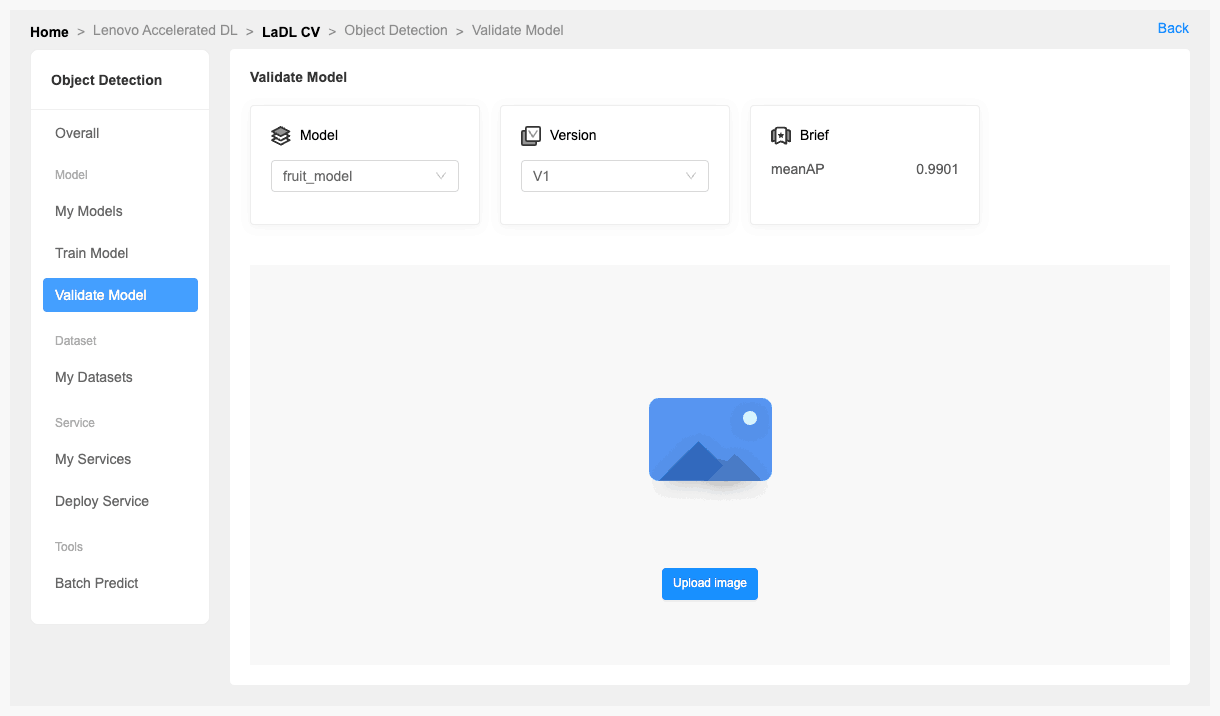
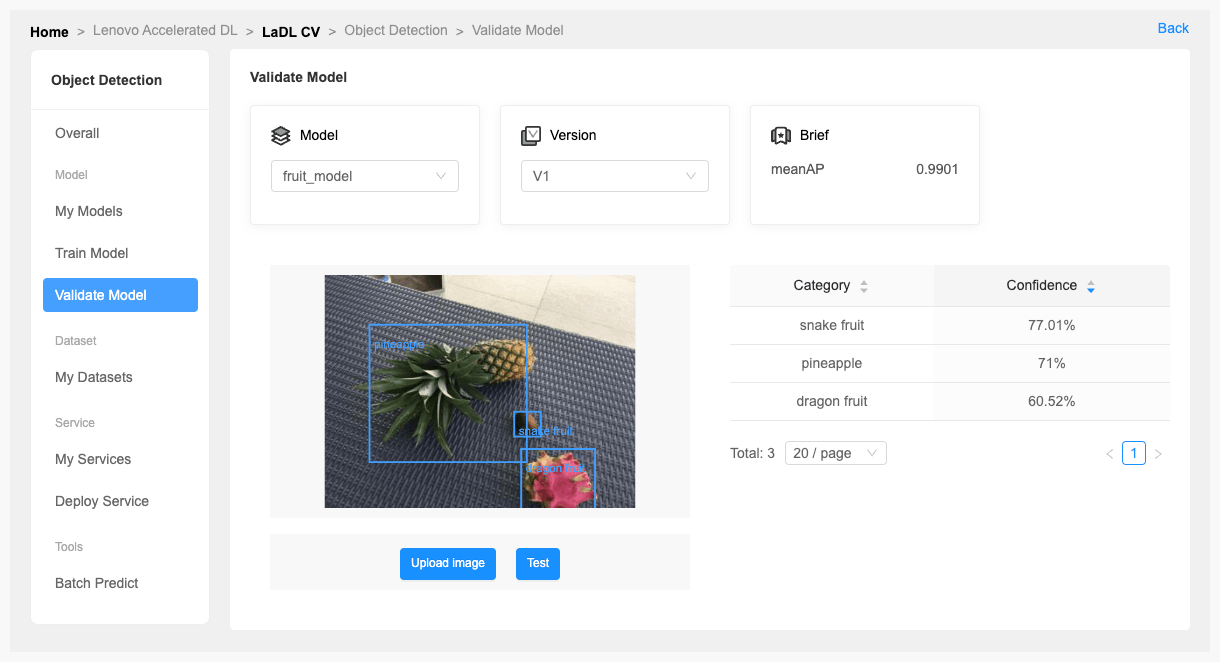
- You can also predict multiple images by [Batch Predict].
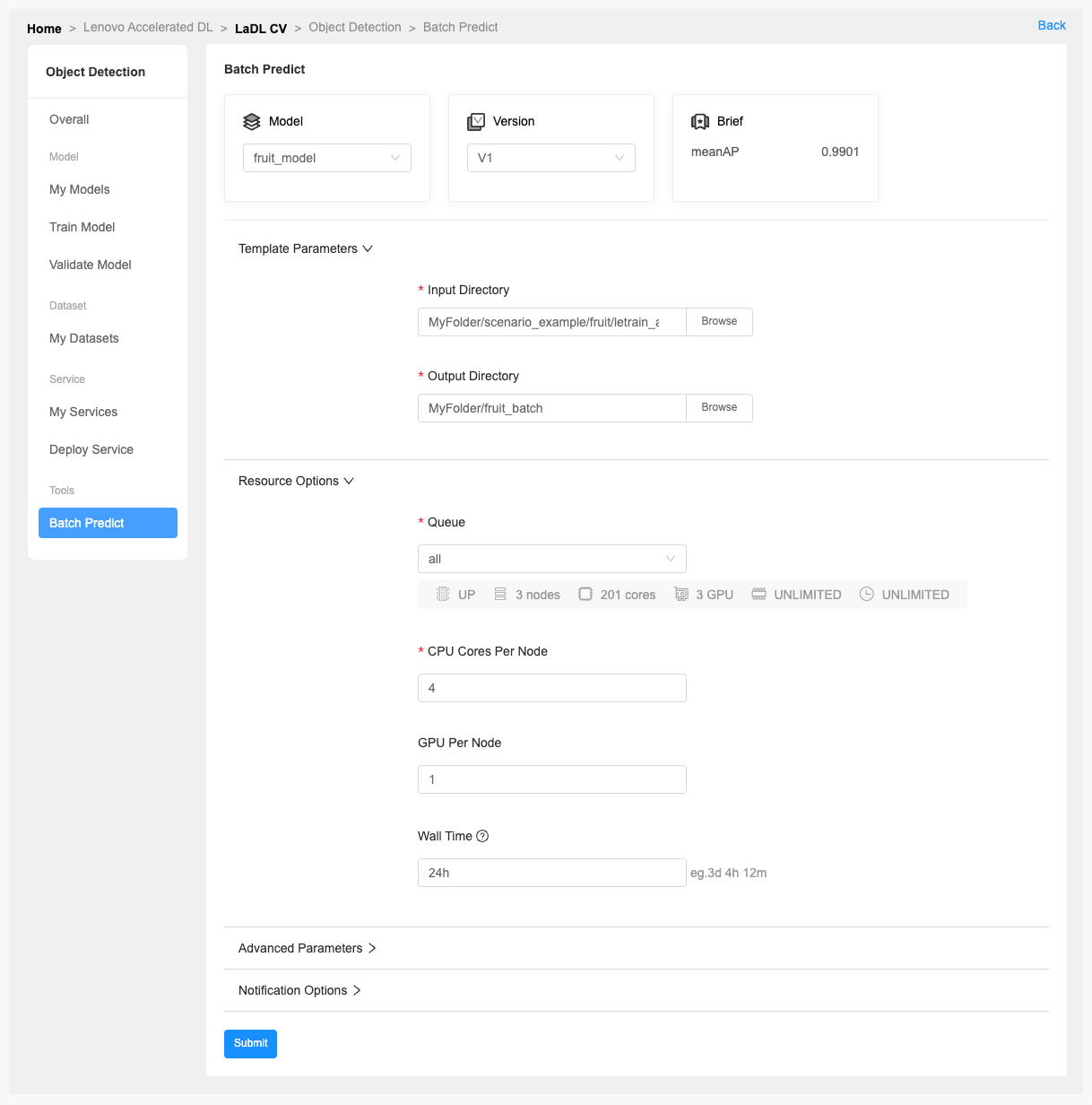
Deploy Service
When you have a model that achieves the expected predictions, you can deploy it as sevices in LiCO or package it to docker platform.
- You can deploy the model by [Deploy Service]. In [My Services] you can manage all deployed services in current scenario. Instructions are provided for each service, which you can view it by clicking on the service id.
